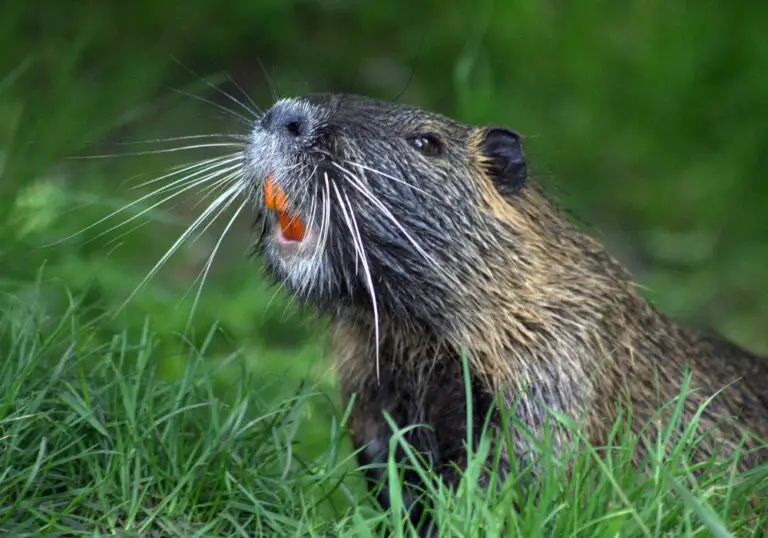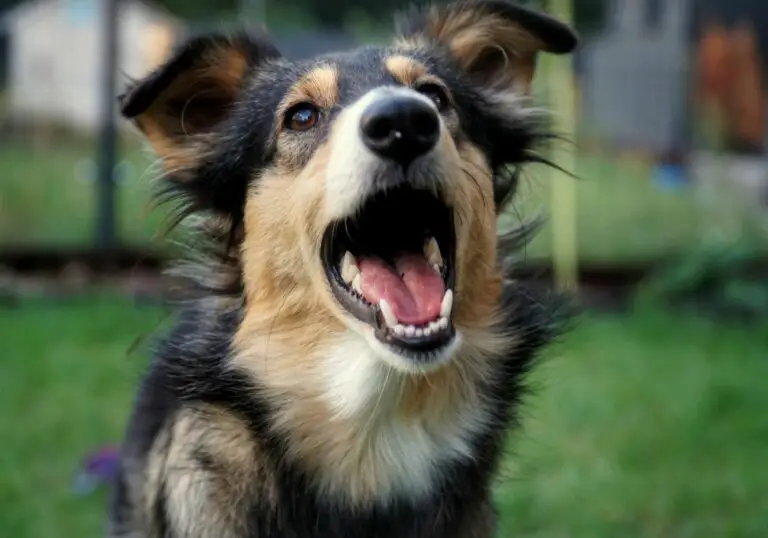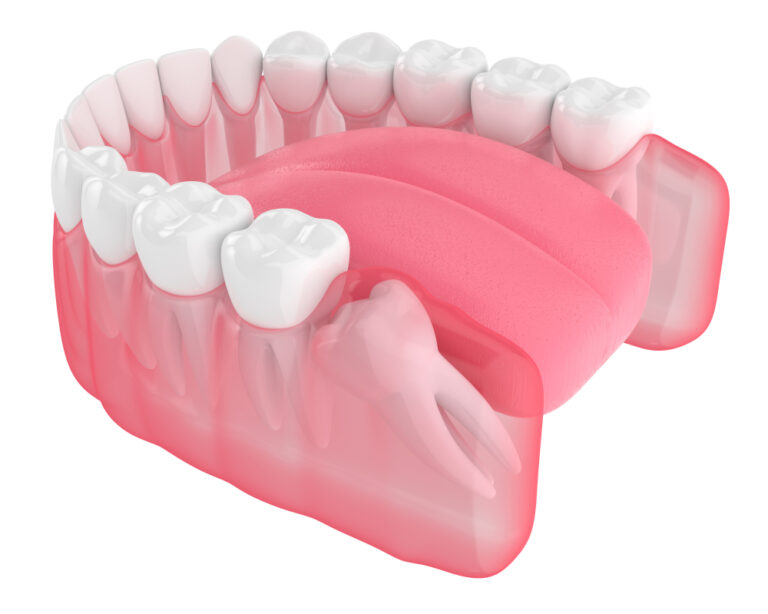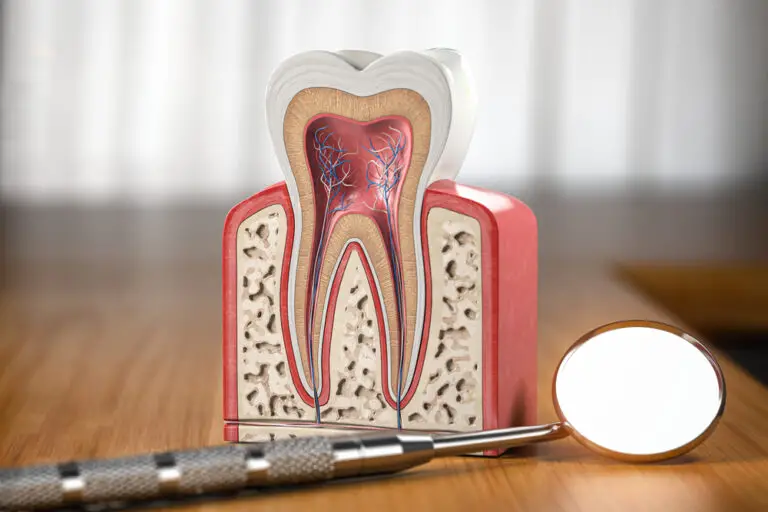Most pet owners understand that providing their furry friends with adequate dental care is an important part of ensuring they stay healthy – and a major part of this is removing plaque and tartar from dogs’ teeth.
But what are plaque and tartar? Why do we need to remove them? And what methods can we use?
In this post, we answer questions like these and more as we go into the details of how to remove tartar from a dog’s teeth.
If you want to see some of the more extreme results of what happens when tartar is allowed to build up in a dog’s mouth, you can also check out this video before reading on.
What is tartar on Dog’s teeth?
Before we talk about how to remove tartar from a dog’s teeth, let’s take a step back and talk about what tartar is.
When dogs eat, a biofilm called plaque that consists of food residue, saliva and bacteria is deposited on their teeth.
The same also happens to us, and we remove it by brushing – this is one of the main reasons we brush our teeth.
In a wild state, the film of plaque on dogs’ teeth would be removed naturally through things like chewing on bones. However, when dogs are kept as pets, they don’t always have a diet that naturally removes plaque, and it is allowed to build up unchecked.
When plaque is not removed from teeth, it mixes with minerals in your saliva like calcium and hardens, leaving a visible deposit on the teeth, and this is what’s known as tartar.
To maintain your dog’s oral health, consider using a dog teeth cleaner, a specialized product designed to help prevent plaque and tartar buildup. Regular use of a dog teeth cleaner, in conjunction with appropriate dental care, can contribute to a healthier and happier life for your canine companion.
Since tartar is hard, it is much more difficult to remove than plaque, and once there, it will continue to accumulate.
As the tartar deposit grows, it can begin to cause further problems with the teeth and gums and can lead to issues such as tooth decay, tooth loss, gum disease, abscesses and more.
As a result, it is essential to prevent tartar from building up – and to remove it when it occurs.
Small dogs are more susceptible
Although all dogs are susceptible to plaque and tartar formation, small dogs – and especially brachycephalic breeds (those with short broad skulls and snouts like pugs or French bulldogs) – are even more at risk of developing deposits of tartar.
This is because the unnatural shape of the head means there is no longer enough space for all the teeth to grow naturally.
As a result, the teeth are often crooked, which makes it even more difficult to eliminate plaque through natural means like chewing – and it’s also more difficult for owners to keep their dogs’ teeth clean through brushing.
What does tartar look like?
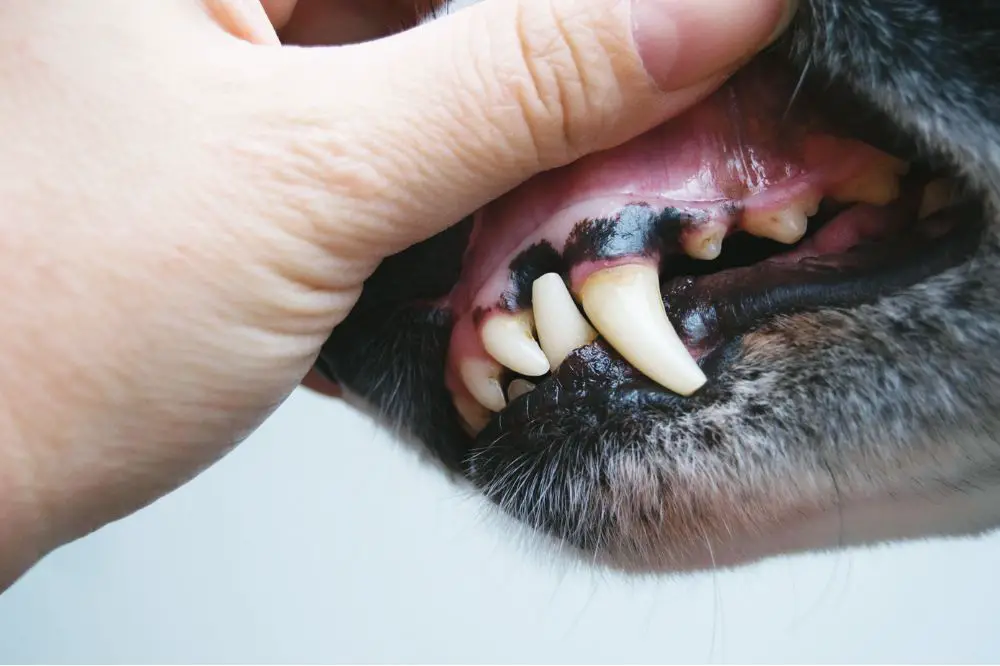
So now we know what tartar is, how can you spot it?
Most people know what tartar looks like in humans, even if they don’t know what it’s called or how it got there – it’s a build-up of a gray, off-white or brownish deposit that first becomes noticeable between our teeth.
Tartar deposits can also easily become stained, making our teeth look dirty.
In dogs, tartar looks much the same. When you inspect your pet’s teeth, look for a similar kind of mineral build-up, especially around the bottom of the teeth starting at the gum line, that will probably be gray or off-white in color.
You may also notice red, swollen or bleeding gums where tartar is present, and often, a dog will have particularly unpleasant breath.
How to Remove Tartar from a Dog’s Teeth
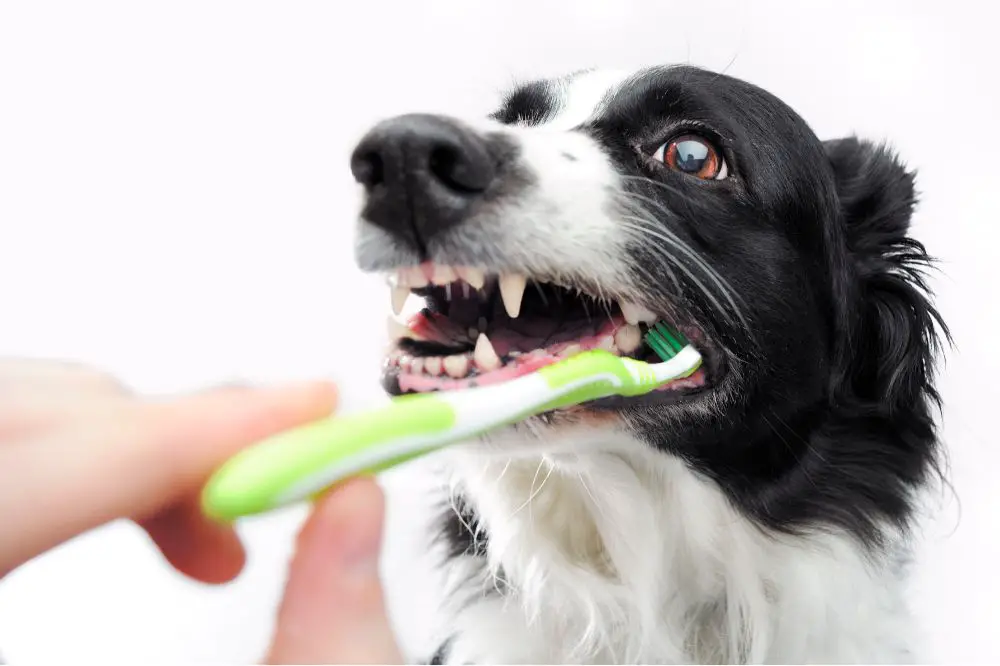
In humans, once tartar forms, it’s impossible to remove it at home – or at the very least, highly inadvisable to try since you can easily end up permanently damaging your teeth if you try to scrape it off by yourself.
Unfortunately, the same is true in dogs, and if you find that your pet has a significant tartar build-up in its mouth, your options are limited. That said, there are still a couple of things you can try, so let’s look at both of these now.
-
Anti-tartar gel
Specially formulated anti-tartar gels exist that contain enzymes that work to break down the tartar, making it easier to remove.
You simply apply the gel to your dog’s teeth and then leave it there to act. You don’t need to brush the teeth after because if you leave the gel in the dog’s mouth, it will simply continue working at dissolving or softening the tartar.
Such treatments need to be repeated every day, and after a month, you will usually see noticeable results.
Once you start the treatment, you can also help remove the softened tartar through daily brushing and by giving your dog things like bones or dog chews to chew on.
-
Bone and chews
In the wild, dogs would chew bones to remove plaque, and in a domestic setting, giving them bones or chews can also help remove some of the tartar.
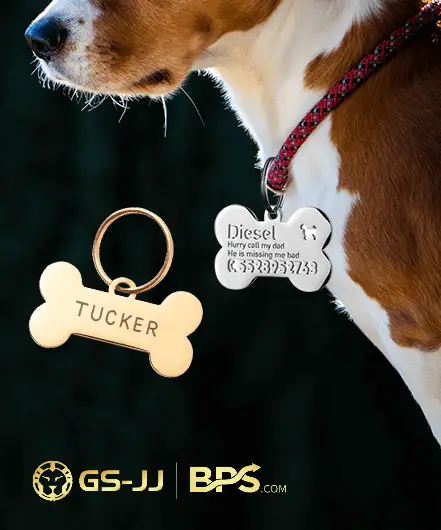
If you want to have exclusive tags for your dog, metal dog tags may be more appropriate. This will prevent it from being chewed by their teeth and will also emphasize the texture of the tag. And dog tags can be achieved by Custom Keychains, and customizing keychains online not only allows you to design your favorite pattern, but also to choose any material you want. And keychains that add your own creativity and your pet’s logo can also be worn as your personal accessory.
However, it has to be said that this alone will not remove significant amounts of tartar and is best used in conjunction with other methods such as anti-tartar gel or as a preventative measure.
-
Professional cleaning
By far the best method of removing tartar once it’s formed is taking your dog for regular dental cleaning so that your veterinarian or a specialist in veterinary dentistry can remove the tartar build-up from your pet’s mouth.
Professional cleanings take place under general anesthetic, allowing the veterinarian to clean all plaque and tartar from your dog’s teeth, including from below the gum line.
At the same time, they will be able to inspect your dog’s teeth for any other possible issues and fix them before they become more serious.
Professional cleaning should be seen as an essential part of your dog’s healthcare routine and should be carried out once a year – especially for smaller dogs.
However, since it’s an expensive procedure, for larger dogs that are less at risk, having this done once every two years can be acceptable.
How to prevent tartar from forming
Since tartar is hard to remove once it’s already formed – or expensive if you have it done professionally – it’s clear that the best option is to prevent it from forming in the first place. So how can you do this? Here are some things to try.
-
Regular brushing
Just like for us, the first line against tartar is regular brushing to remove plaque from the teeth.
How often you do this may depend on how amenable your dog is to brushing, but once every day or two would be perfect. However, failing this, even if you can only do it once or twice a week, this is better than nothing.
You should use special dog toothpaste, and the dog-friendly flavors help ensure your dog enjoys the experience more – but never use human toothpaste since it contains fluoride, which can make your dog sick.
-
Bones
If your dog has bones to chew, it will help remove plaque the natural way, preventing it from developing into tartar. Raw bones are best and can often be picked up for cheap from local butchers.
-
Chews
Chews are special treats for dogs to chew that clean their teeth while keeping them occupied and also helping to keep their jaw muscles healthy. These are a great replacement for bones if you can’t get hold of any.
-
Dental treats
Dental treats are similar to chews, but they include special ingredients designed to help remove plaque while also freshening your doggy’s breath. They are a recommended addition to your pet’s dental care, even if you manage to brush daily.
-
Diet
Certain foods such as sugary foods or cereals can cause plaque and tartar to form more quickly and so should be avoided or at least given in moderation.
-
Regular checkups
Although doggy dental cleaning and checkups are expensive, they can help you find and correct problems before they become too serious, saving you money in the long run. The veterinarian will also remove all tartar deposits, helping to keep your dog’s teeth in great shape.
FAQs
What foods cause plaque and tartar?
Certain foods like sugar and cereals can accelerate the development of plaque and tartar and are best avoided, especially since they don’t form part of a dog’s natural diet.
How can you prevent tartar?
The key to preventing tartar is to ensure that plaque is removed regularly. You can do this by giving your dog bones, chews and dental treats to chew on and also by brushing regularly.
Annual visits to your veterinarian for checkups and cleanings are also an essential part of doggy dental care.
What are the signs of dental issues in a dog?
If you notice bad breath, loss of appetite, pawing at the face, obvious discomfort or unusual grouchiness in your pet, it could be a sign that your dog is suffering from some kind of dental issue.
Red, swollen or bleeding gums are also another tell-tale sign that your dog needs to see a veterinarian.
Keep plaque under control and go for annual professional cleanings
Since tartar is so hard to remove once it’s formed, the best advice is to constantly remove plaque to prevent it from solidifying into tartar in the first place.
However, when tartar inevitably starts to build up, you can tackle it with treatments like anti-tartar gels – but you should still take your dog for professional cleaning once a year to remove tartar deposits and to prevent other oral health issues from developing.

